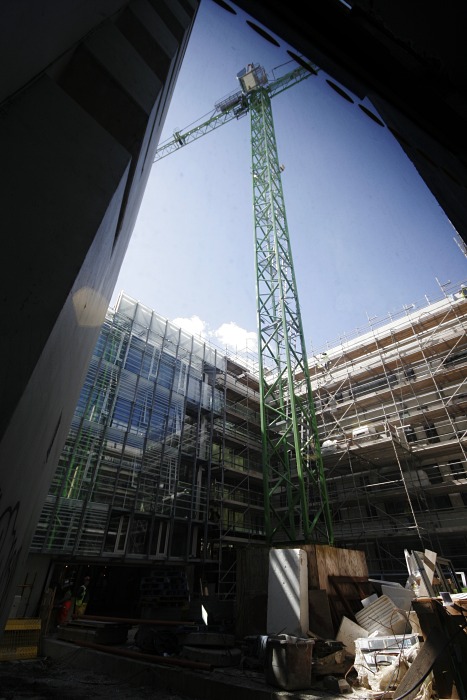 In October 1981, newspapers in the USA and the UK reported
In October 1981, newspapers in the USA and the UK reportedplans for a 169-storey building in Chicago. If this is built, it will be
almost twice as tall as the 384-metre Empire State Building in New
York.
Since the early days of civilised man, buildings have been getting
higher all the time. Today, all large cities have tall buildings, either for
use as offices or as flats. These are called high-rise buildings. The
tallest of a]i in fact, are not used for offices or for living, but are
special structures for radio and television. For instance,Warsaw Radio
Mast in Poland, which is 646 metres tall, is the tallest of such
structures. The world's tallest office building is the Sears Tower in
Chicago. This has 110 storeys, and reaches a height of 443 metres.
16,700 people work inside the building, and there are more than one
hundred lifts for their use.
But why do we have high buildings? Is there any real advantage?
The most common reason given is that in many cities there is a lack of
space.
The island of Manhattan, New York City, is a good example of
this. Here, office space is very expensive. There is no more land.
Buildings have to go up. The same reason is given for high office
buildings in Tokyo, London and other large cities of the world.
But what about people? Is it really necessary to build high
buildings for people to live in?
Today, there are many who believe high buildings actually damage
people's minds and feelings. These people believe high-rise buildings:
-have no advantages, except for their owners and for banks
-are not cheap to build
-do not help create open space
-destroy the landscape
-cause crime
-are not good for children
-are expensive to look after
High-rise buildings lower the quality of life. The following reports
show this. Report from England, 1967: The higher people live off the ground,
the more likely they are to suffer from mental illnesses. Women,
because they spend most time at home, suffer most.
3. The report from Denmark .
a) shows more people live in high-rise buildings in Denmark than in other
countries
b) states the disadvantages of high-rise buildings for children
c) shows how women living in high-rise buildings suffer
d) says that crime rate is higher in high-rise buildings in Denmark than in other
countries
4. Which of the following is not true?
a) The tallest buildings in the world are special structures used as offices.
b) When people live in high-rise buildings, they are cut off from real life.
c) High-rise buildings are still built although they have many disadvantages.
d) Mental illnesses increase especially among women who live in high-rise
buildings